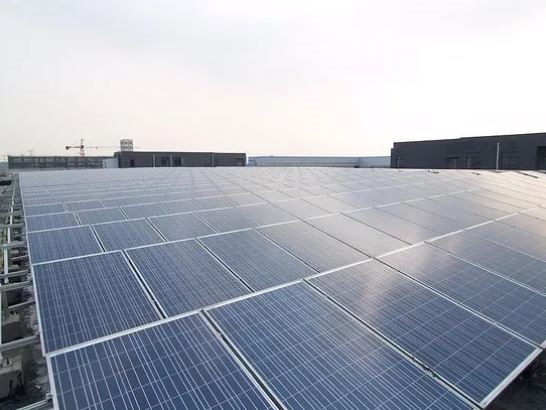

Introduction to Solar Energy
Solar power is the energy from the sun that is converted into thermal or electrical energy. Solar panels generate electricity directly from the sunlight via an electronic process and can be used to power anything from small electronics such as street lights, fans, Led lights to solar water heaters, geysers, solar water treatment plants etc.
Approximate Cost of 1KW Solar Panel

Types of Solar Panels
The three types of solar panels are monocrystalline, polycrystalline, and thin-film solar panels. Each of these types of solar cells is made in a unique way and has a different aesthetic appearance. Here’s the breakdown for each type of solar panel.
Monocrystalline
Monocrystalline solar panels are the oldest type of solar panel and the most developed. These solar are made from about 40 of the monocrystalline solar cells. These solar cells are made from pure silicon. Monocrystalline solar cells appear black because of the way sunlight interacts with pure silicon. While the cells are black, there are variety of colors and designs of the black sheets and frames. The monocrystalline cells are shaped like a square with the corners removed, so there aresmall gaps between the cells.
Polycrystalline
Polycrystalline solar panels are a newer development, but they are rising quickly in popularity and efficiency. Just like monocrystalline cells, polycrystalline cells are made from silicon. But polycrystalline cells are made from fragments of the silicon crystal melted together.
Polycrystalline cells are blue in color because of the way sunlight reflects on the crystals. Sunlight reflects off of silicon fragments differently than it does with a pure silicon cell. Usually the back frames and frames are silver with polycrystalline, but there can be variation. The shape of the cell is a square, and there are no gaps between corners of cells.
Thin Film
Thin-film solar panels are an extremely new development in the solar panel industry. The most distinguishing feature of thin-film panels is that they aren’t always made from silicon. They can be made from a variety of materials, including cadmium telluride (CdTe), amorphous silicon (a-Si), and Copper Indium Gallium Selenide (CIGS).As their name suggests, thin-film panels are easy to identify by their thin appearance. These panels are approximately 350 times thinner than those that use silicon wafers. But thin-film frames can be large sometimes, and that can make the appearance of the entire solar system comparable to that of a monocrystalline or polycrystalline system. Thin-film cells can be black or blue, depending on the material they were made from.Thin film soar cells provide better ways to produce electricity from sunlight than any other method. We can implement these panels in forest areas, solar fields, traffic and street lights, and so on. The cost of this panel is very less as compared to the older silicon wafer cells.
Monocrystalline

Polycrystalline

Thin Film

Make A Donation
Giving a donation to Donatics can help us to reach more children transform their lives for the better. Join your hand with us for a better life and beautiful future.
Need and Objectives of the Solar energy project
Half of the rural population in Pakistan still lack to access of electricity due to lack of infrastructure and dwindling sources of fossil fuels such as oil and gas. People in villages rely on oil lamps and candles to light their homes with kerosene as the primary lighting media used. The fuel is dangerous, dirty and cause an indoor pollution. Life in a village would come to a halt after sunset and children in a mud-and-clay-home study in the dim, smoky glow of kerosene lamp. This could lead to children giving up their interest in studies and contribute to the increasing illiteracy in Pakistan. Moreover, power outages due to load shedding has also increased in the recent years with an average of 16 hours a day during summer and 12 hours a day during winter in some rural areas. In order to address these problems Asra welfare trust took the initiative to address these problems by the installation of solar panels to overcome the electricity shortage and provide uninterrupted power supply to poor people in the villages. Objectives of solar energy project include:
- Contribute to meeting the electricity supply shortage in economically deprived and scattered rural areas of KPK
- Provide electricity to schools, colleges and mosques in the villages that are outreach of electricity grids
- Develop local economy and create employment opportunities, particularly in rural areas and in a district that is considered as backward area.
- Create employment opportunities for poor people during construction and operations.
- Improving the quality of poverty stricken people in the rural areas of Pakistan


